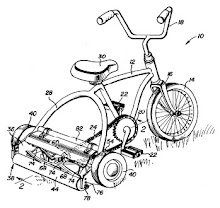The following is reprint of an article I wrote for the Fall 2010 edition of the SDM Pulse. Read it in all its PDFy glory there, or enjoy the web form here. This project inspired what has become my thesis topic, so you'll be seeing much more about Hawai'i here. The project team consists of Kacy Gerst (SDM ’09), Matt Harper, (SDM'10), and myself Karl Critz (SDM ’10).
The state of Hawaii has great incentive to pursue renewable energy projects. The Hawaii Clean Energy Initiative (HCEI) has provided top-down pressure for change by setting targets of 40 percent renewable energy and a 30 percent increase in energy efficiency by 2030. Electricity costs triple the national average, and gas at the pump is 50 percent more expensive than on the mainland. This combination of political and economic drivers encourages Hawaii to test new systems for energy efficiency and sustainability significantly before such systems are explored on a national scale. For this summer’s course in systems engineering, SDM students undertook to find ways to help Hawaii reach its targets in these two areas: increased transportation efficiency and stable renewable electricity production.

Much economic and policy research has already focused on how to structure incentives in order to meet a 40 percent renewable portfolio standard. Team Grid therefore chose to focus on the less-studied systems issues and incentives involved in integrating intermittent sources of energy, such as wind and solar power, into the electrical grid. While some renewable energy sources, such as biomass or biofuel, act like the status quo fossil fuels and can be ramped up or down as needed, others do not. Geothermal energy installations usually have a fixed maximum capacity and have limited ability to respond to demand variation. Worse, wind and solar sources are entirely at the mercy of nature. A grid supplied by these intermittent sources must work harder to meet demand when the wind stops blowing.

The SDM team deployed a rich set of systems engineering tools to address the problem. Characterizing the proposed electricity grid for 2030 exposed the scope of the problem on the minute and hour timescale. A model of the grid from today until 2030 revealed the connections between generation, demand, investment, equipment retirement, transmission, and stabilization. The team also developed a model of stakeholders to put hard economic values on the cost of blackouts, not-in-my-backyard attitudes, habitat destruction, and behavior change. By using experimental design, the team evaluated a set of portfolios for its economic and social costs. This analysis revealed an optimal set of stabilizers for assuring an adequate energy supply with intermittent resources.

The best portfolios focused on simple solutions that use existing infrastructure. It is not, strictly speaking, economical to maintain oil-fired power plants when they will only be used infrequently. However, compared to other storage technologies it is much less expensive (economically and socially) to keep these plants maintained and ready to step in when the sun and wind cannot provide. The team therefore recommended that the Public Utilities Commission guarantee that low- utilization oil plants be compensated by ratepayers.
Unfortunately, such plants are unable to take extra energy when the wind is blowing strong and demand is low (“down-regulate”). To react quickly to unexpected changes and stabilize the grid, the team also recommended the use of chemical energy storage devices such as batteries or fuel cells. Since the storage would supply broad grid benefits, it makes sense that it be controlled by the electric company and not by individual wind/solar developers. The general benefits of storage should also qualify investments for public subsidies similar to the producer tax credit offered for wind and solar developers.
In addition to these two themes, the team also found benefit in (1) dynamic billing policies to shave demand during peak times and (2) streamlined siting for transmission lines and geographically distributed intermittent sources. Each of these policies will create the strong grid Hawaii needs to reduce its fossil fuel imports and assure the continued services upon which its economy depends.

These projects were developed in close collaboration with Michael Duffy at the National Renewable Energy Lab, who provided continuous feedback and guidance to SDM students throughout the course. The teams thank Duffy (who received a master’s from MIT and a PhD from Ohio State University) for his mentorship.





